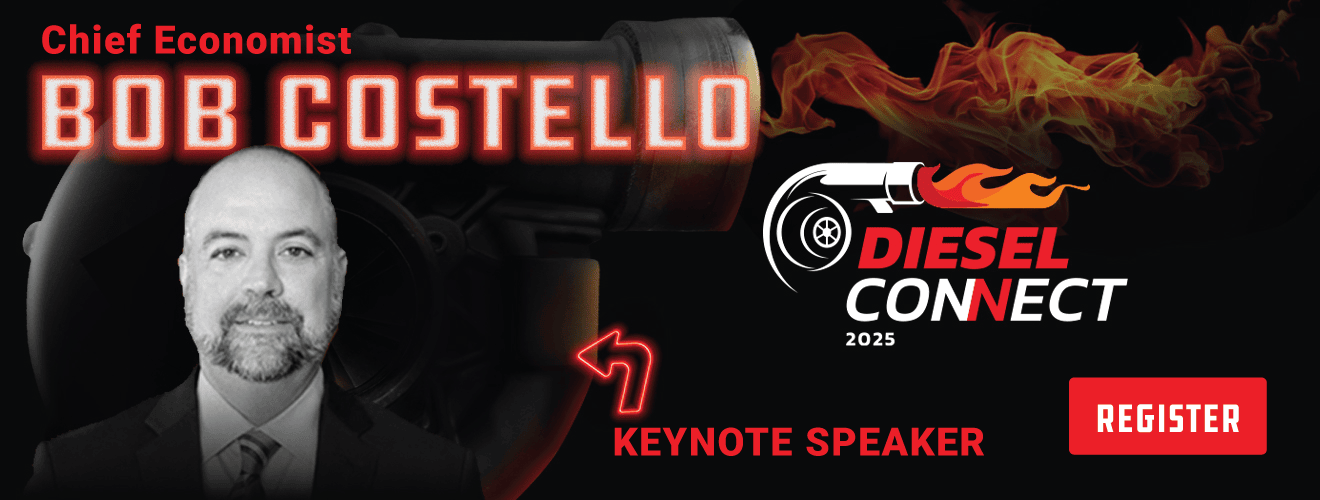In The Bay: Diesel vs. Electric

It’s the elephant in the room. Will commercial repair shops go away when electric trucks become a thing? Are truck shops in 2020 the same thing as horse-and-buggy shops in 1920? As in, about to go obsolete?
The short answer is no. But let’s unpack it.
What’s Missing?
Certain things will be missing from electric trucks. First, they don’t have an engine. This means no cranking, ignition, air intake, fuel, or exhaust systems. And no engine means no clutch or transmission.

So all the skill sets, diagnostics, tools, and equipment around maintaining and repairing diesel engines and transmissions would become obsolete if electric took over completely.
Diesel-Electric Hybrids
However, that may never happen. There is some fascinating work being done in the area of diesel-electric hybrid vehicles. This is a similar concept to rail locomotives, where diesel engines produce electricity, which in turn powers electric motors. Some of these engines may even be built with ceramics.
What’s New?
Electric trucks will also have new components that shops need to learn to repair and maintain. First, electric motors. In place of the engine and transmission you’ll have at least one of them. Tesla has said their semi will have four independent motors. Toyota and Paccar have prototyped a model that drops a single bullet train motor (that’s right) into the cavity left by the engine.
Second, you’ll have significantly more batteries, which will likely come in large, heavy packs. Tesla plans to place battery packs under the floor of the cab, sitting between the back and front wheels. The plan is to have four packs, one for each motor. (By the way, this makes the unloaded weight of a day cab about 4,000 pounds heavier than an equivalent diesel.)
Hydrogen Fuel Cells
Third is a twist on pure electric trucks: the hydrogen fuel cell. These fuel cells create electricity that in turn powers an electric motor. Fiberglass tanks (that are ostensibly much safer than the Hindenburg) hold the hydrogen. What’s really cool is that the chemical reaction that produces electricity from hydrogen results in exhaust of pure water (although there may be some chemical waste over time in the fuel cell itself).
The major drawback of hydrogen is range. Because there is currently no real network of hydrogen fuel stations, trucks can only travel so far from the nearest station.
Manufacturers can solve this by including more batteries, but that increases the truck weight. They can also compress the hydrogen so more can be stored, although this requires significant energy to keep the gas cooled, once again limiting the truck’s range.
When we see a network of hydrogen fueling stations, hydrogen fuel cell technology becomes a real option.
What’s Different?
Not everything we’re used to is missing from these new trucks. Some things are just different. For example, electric motors also get hot, and require a sophisticated cooling system. There is also a much more powerful and sophisticated charging system.
Drive shafts can be significantly different, with manufacturers prototyping electric motors embedded right in an axle or differential, or placed right at each wheel.
A new braking system that generates electricity from the energy required to stop is certainly different. This is called “regenerative braking”. However, regenerative braking is not robust enough to meet FMCSA requirements, so a traditional air brake system will also be required.
And finally, the instruments and gauges of the truck will be very different, designed to meet the needs of the components on the truck.
What’s the Same?
While a lot will be missing or different, there is quite a bit that will be the same. For example, trucks will still need heating and air conditioning systems. How they derive power might be different, but the rest is your standard HVAC.
There will still be a cab with fiberglass and sheet metal. There will still be a frame, horns, alarms, lighting systems, steering, suspension, tires, wheels, and hubs.
Conclusion
More likely than not, we will not see universal adoption of strictly electric trucks. Instead, the advent of electric and hybrid vehicles will mean greater diversity in what needs to be serviced.
Strictly electric vehicles will need less overall maintenance, but will be limited in the distances they can travel. Diesel-electric hybrids will be able to travel farther, but will require more maintenance. And strictly diesel vehicles may never completely go away.

